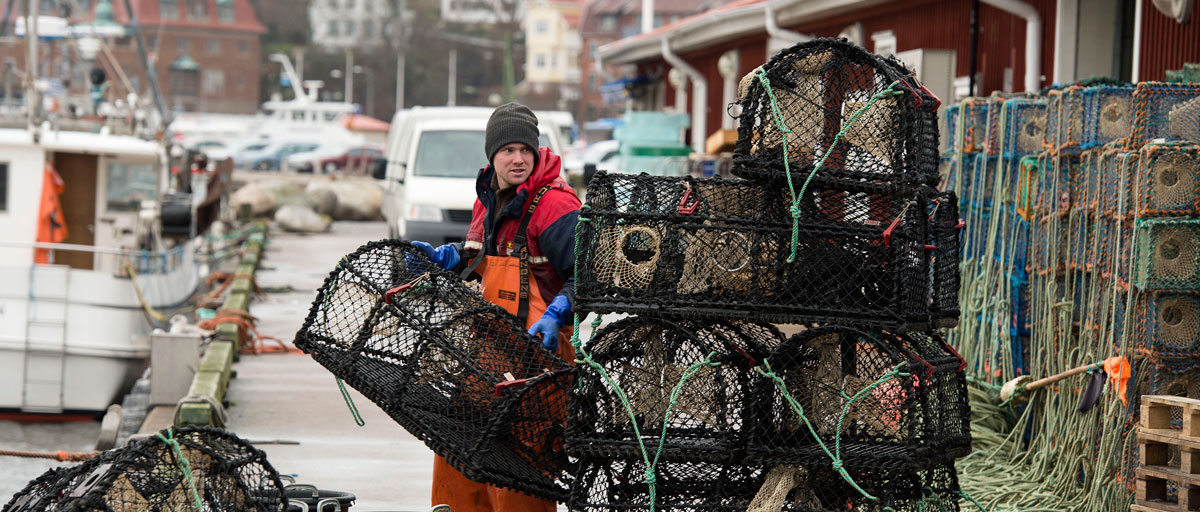
Researchers argue there is a need to re-examine who should have a say in legal processes with outcomes that have social and environmental consequences that reach outside the formal jurisdiction or defined legal system. Photo: I. Petterson/Azote
Resilience and law
How long, the arm of the law?
Increasing social-ecological interactions require legal systems that span across borders and contexts
- The concept of "legal resilience building" means shifting human development in a direction where we start working with rather than against the environment
- Expanding the scope of people with a say would make it more difficult for those who cause harm to the environment to hide behind state borders
- We need a legal system that can match and relate to the increased connectivity in social-ecological systems
In an increasingly globalized world interactions are speeding up, not only between people but also between humans and the environment. Societies today are not only connected through legal, political, economic and technical systems, but also through the fundamental life-support system that we call the biosphere.
In a recent book chapter centre science director Carl Folke and board member Jonas Ebbesson argue that it is time for lawyers and legal systems to start tackling the global and fundamental challenges that humanity is now facing.
They introduce the concept of "legal resilience building" as a framework for shifting human development in a direction where we start working with rather than against the environment.
"Established legal concepts concerning scales and jurisdiction that primarily concerns the geographical reach of the law, do not yet match up with the biosphere challenges we face. Social-ecological systems are connected and interact across scales, from local to global, and across given jurisdictions such as national
boundaries"
Carl Folke, co-author
Building legal resilience
The authors argue that there is a need to re-examine who should have a say in legal processes with outcomes that have consequences that reach outside the formal jurisdiction or defined legal system.
"If, for example, increasing fishing quotas in one part of the world will have an impact on other regions, we can easily conclude that the scope of people affected by such a law is in fact larger than what was maybe first thought to be the case. This finding should then also influence who has a say and are considered in the law-making procedures," says Jonas Ebbesson.
"This would also increase the likelihood of the law being accepted and respected," he continues.
Through adequate public engagement, including the relevant stakeholders in law-making procedures, the legitimacy of the decisions that are taken would increase. Public engagement also results in important knowledge input that contributes to a more informed process and more informed decisions and increases trust in the legal institutions and administrations.
Expanding the scope of people with a say, for example across national borders, would make it more difficult for those who pollute or in other ways cause harm to people’s health and the environment to hide behind state borders. By allowing those affected by the actions of for example large corporations exporting their environmental impacts to initiate judicial review processes and bring perpetrators to court, environmental justice is enhanced.
All these factors together increase the resilience of the legal system.
Many cooks make for a what-now broth?
Ebbesson explains that for practical reasons, legal resilience building must be designed in a way that still allows for effective decisions to be taken by for example national governments or international bodies.
"It cannot rely on participation by individuals belonging to the general public. But there is still a need for an update on who is considered sufficiently concerned to be part of decision-making," he says.
With current international legislation not being distinct or accurate enough to lead to effective action, the authors present the hypothesis that legal resilience building requires a matching of scales between the legal geographical reach and the social-ecological issue that the law concerns. This matching of scales will require multi-level governance, where different policy documents, declarations and multiple legal acts are included.
"Flexible multi-level governance can foster capacity to adapt in the face of sudden and abrupt changes, and it requires that we find a common understanding of ecosystems and social-ecological interactions," says Folke.
A polycentric maze
"Traditionally we view international law as 'horizontal', state to state, government to government, working on the same level in the political hierarchy. National law is instead seen as 'vertical', working across different levels in the nation, local to national. These metaphors do not properly describe the actual relationships between all the different actors involved," says Ebbesson.
The metaphor of polycentricity is not perfect either. But it captures many of the relations that are currently overlooked, such as the many initiatives that start at the grassroots level rather than by government decree, and the fact that governance is not only one-way only top-down.
"Given the increased connectivity in social-ecological systems, and the speed at which we see impact and change as a result of those connections, we need a legal system that can match and relate to these different levels and interactions," Folke concludes.






